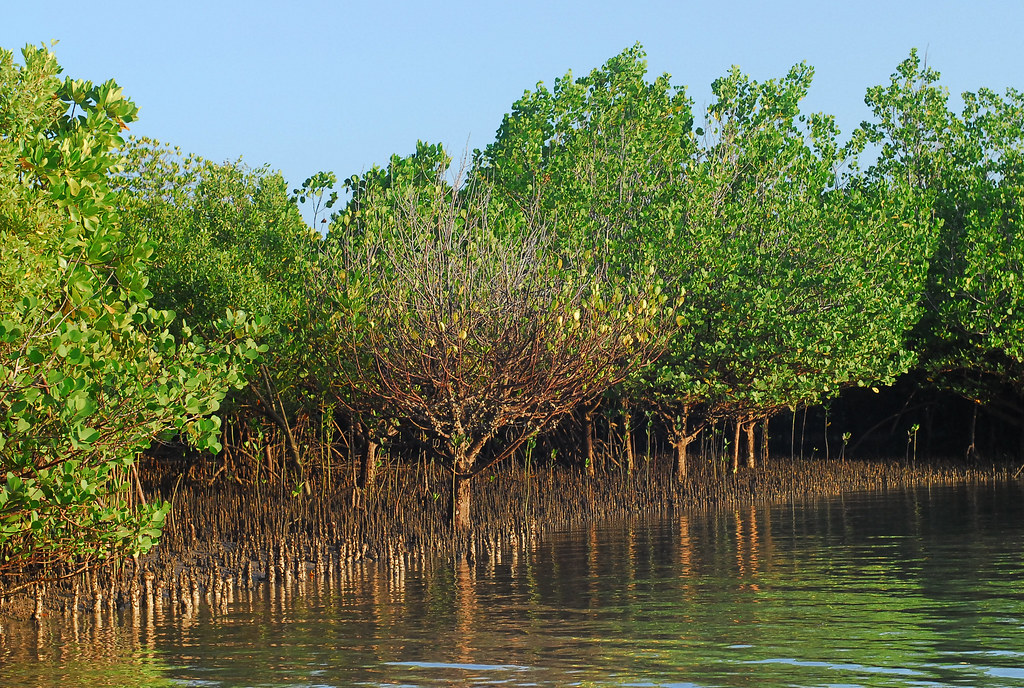Progress reported in mangrove restoration in Sri Lanka
The UN-backed World Restoration Flagship project seeks to restore 10,000 hectares by 2030. Coastal forests are vital to protect the country from natural disasters such as storm surges and tsunamis, playing a crucial role in resisting climate change. For environmentalists Dissanayake and Semasinghe, mangroves also provide “sustainable livelihoods for rural communities.”
Colombo (AsiaNews) – Sri Lanka is taking significant steps to counter low mangrove cover, currently equal to 0.3 per cent of the country's landmass. This is crucial because lack of coverage increases the risks associated with climate change and natural disasters such as storm surges and tsunamis.
In light of the situation, the Wildlife and Nature Protection Society (WNPS), the main scientific partner of the Department of Wildlife Conservation's (DWC), and other partners are advancing innovative restoration efforts to address this urgent environmental challenge while enhancing ecosystem resilience.
Recognised as a World Restoration Flagship, the initiative is eligible for UN for technical and financial assistance aimed at restoring 10,000 hectares of mangroves by 2030. Their intricate root systems are attractive to fish and other organisms seeking nurseries, food, and shelter.
The necessity for the ecosystem’s mitigating effect was highlighted by the 2004 tsunami in Sri Lanka. Now scholars and environmentalists are calling for increased protection measures and sustainable practices to restore and preserve the country’s crucial "blue forests", which is how Sri Lanka’s mangrove forests are frequently referred to.
If timely and effective action is not taken, the consequences for Sri Lanka's environment, coastal communities, and climate change resilience could be critical.
The Anawilundawa Accelerated Natural Mangrove (ANRM) project was a groundbreaking endeavour for biodiversity restoration initiative launched last year on World Seagrass Day (1 March) to rehabilitate mangroves located between Chilaw and Puttalam in the Anawilundawa Ramsar Wetland Sanctuary (North Western Province), an area of 1,397 hectares.
The latter is one of Sri Lanka’s six designated wetlands of international significance (Ramsar Sites), hosting over 150 bird species, 20 mammal species, and over 70 butterfly species, including over 50 per cent of the country’s freshwater fish species rendered by barren shrimp farming .
“This is a five-year project implemented according to a detailed blueprint compiled by Wayamba University of Sri Lanka, in collaboration with the DWC and the Ministry of Environment,” said Environmentalists Nimanthi Dissanayake and Mayantha Semasinghe speaking to AsiaNews.
"Blue forests" are crucial to the country's ecosystem, representing about 2 per cent of total forest cover.
“As they are exceptional at carbon sequestration, storing up to ten times more carbon dioxide per unit area than tropical rainforests, mangroves are a powerful tool in mitigating global warming and climate change,” the two environmentalists explain. “Mangroves also provide vital coastal protection while rendering sustainable livelihoods for rural communities.”
Since the late 1990s, the situation has deteriorated considerably. More than 50 per cent of Sri Lanka's mangrove habitat has been lost to shrimp aquaculture, severely impacting ecosystems and disrupting livelihoods that rely on mangroves for fishing, firewood, herbal medicine, and tourism.
According to senior DWC officials, “as mangrove forests are rapidly degrading due to man-made degradation, in February this year, a large-scale initiative to increase mangrove cover across the country by over 50 per cent was named as one of seven UN World Restoration Flagships”.
This project is part of the United Nations Decade on Ecosystem Restoration led by the United Nations Environment Programme (UNEP) and the UN Food and Agriculture Organisation (FAO), a major initiative that follows global commitments to restore a billion hectares.
Finally, according to senior officials at the Ministry of Environment, in 2015, Sri Lanka became the first nation to legally protect all its mangrove forests establishing the National Expert Committee on Mangrove Conservation and Sustainable Use, spurring several actions to protect and manage mangroves.
In 2020, the government also adopted a National Policy on Conservation and Sustainable Utilisation of Mangrove Ecosystems in Sri Lanka.
14/01/2022 17:17







.png)










